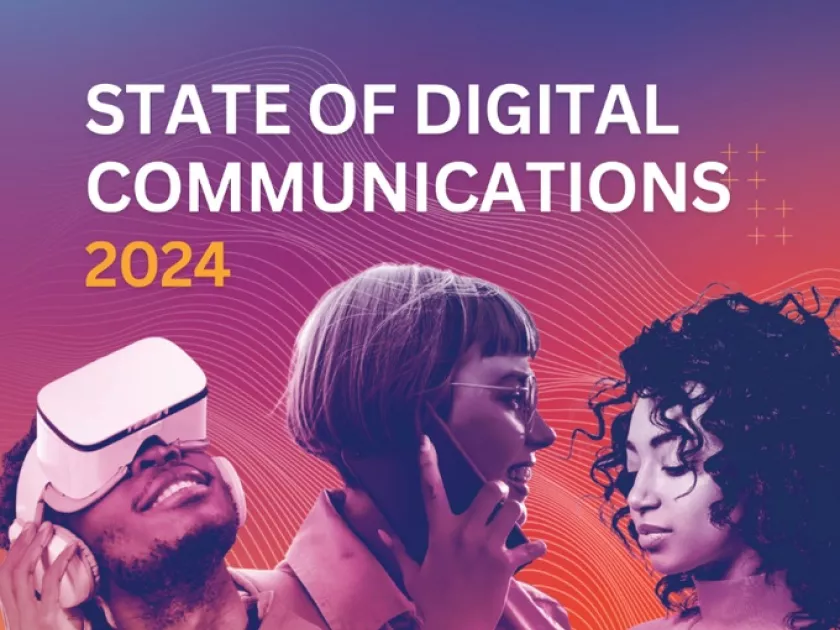Connectivity and innovation: our report finds that Europe is at crossroads
Read the 'State of Digital Communications' Report 2024.

With innovative connectivity becoming more and more crucial to competitiveness and security, telecoms investment reached a record €59.1bn, while 6 in 10 Europeans had access to FTTH by the end of last year. However, only 10 out of 114 networks in Europe were 5G standalone (5G SA) last year and our Continent was lagging behind both Asia and North American on edge cloud offers, signalling that the European connectivity ecosystem is at crossroads.
Connect Europe's “State of Digital Communications 2024” Report is based on research by Analysys Mason. It comes as the sector awaits the new “Connectivity package on digital infrastructure” by the European Commission, underscoring a sense of urgency around telecom policy.
A “lead or lose” moment for Europe’s connectivity ecosystem
This year’s report, for the first time, tracks progress on innovations such as 5G SA, Open RAN and edge cloud. These technologies are re-defining leadership in connectivity and, as a result, they are crucial to achieving Europe’s socio-economic goals and ensuring Open Strategic Autonomy in tech.
A 5G SA network uses 5G core, meaning it has no dependency on previous generations such as 4G. This enables the most innovative use cases, such as campus networks for manufacturing plants. With 10 operational 5G SA networks, Europe did better than North America with its 4 networks, but trailed Asia, which counted 17.
As for edge cloud, which brings computing capacity close to the end user, Europe counted 4 commercialised offers in 2023, trailing both the Asia-Pacific region (17 offers) and North America (9 offers). In open RAN – the most flexible form of radio access network – Europe counts 11 trials and deployments, which means it is ahead of North America, which counted 8, but behind Asia and Japan, which counted 19. These figures underline the need for a pro-innovation and pro-investment industrial policy addressing Europe’s connectivity ecosystem.

EU Digital Decade targets: good progress on FTTH, but still missing 5G and gigabit targets
With the EU aiming to reach full 5G and full gigabit coverage by the end of this decade, our report found that significant additional investment in roll-out is still needed before the targets are achieved. In 2023, 5G in Europe reached 80% of the population, up from 73% the previous year. However, Europe still trailed all its global peers: South Korea (98% 5G coverage), the US (98%), Japan (94%), and China (89%).
When it comes to fixed networks, Europe’s gigabit-capable coverage reached 79.5% in 2023, as opposed to 97.0% in South Korea, 89.6% in the USA and 81.4% in Japan. On the flip side, Europe’s FTTH coverage of the population (excluding FTTB) reached 63.4% in 2023, up from 55.6% the previous year. However, also this year, Analysys Mason confirms that at the end of the decade, around 40 million people in the EU will still have no access to a fixed gigabit connection.

European telecoms: weak fundamentals should be reason for alarm
The delays in deployment, which affect users, are mirrored in both suboptimal investment per capita and the overall weak financial health of the sector, which are cause of concern in terms of competitiveness.
In 2022, telecom CapEx per capita in Europe stood at €109.1, lower than in South Korea (€113.5) and far lower than in the US (€240.3). In absolute terms, however, European telecoms investment reached €59.1bn in 2022, up from €56.3bn the previous year, with 60 to 70 % being dedicated to mobile and fixed network roll-out.
The revenues of the sector, measured with Average Revenue Per User (ARPU), remains the weakest of all global peers: In 2022, mobile ARPU was €15.0 in Europe, as opposed to €42.5 in the USA, €26.5 in South Korea, and €25.9 in Japan. The same is true for fixed broadband ARPU, which was €22.8 in Europe, as opposed to €58.6 in the USA and €24.4 in Japan. Only South Korea was lower (€13.1).
This is mirrored in the fact that the ROCE (return on capital employed) of ETNO members has almost halved in the recent past: in 2017 ROCE was 9.1%, while in 2022 it was 5.8%, signaling that it is increasingly difficult for European telcos to generate adequate returns on their investment.
This happens against a scenario in which European retail markets remain uniquely fragmented and a real European telecom single market remains unaccomplished. The report found that in 2023 Europe counted 45 large mobile operating groups with more than 500.000 customers, as opposed to 8 in the USA, 4 in both China and Japan, and 3 in South Korea.

